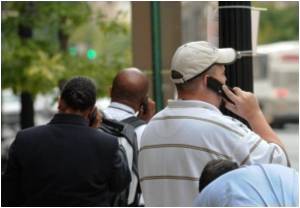An article in CMAJ states that mobile health technology has substantial potential for improving access to health care in the developing world and in remote regions of developed countries.

Smartphones, tablets and other consumer devices are being used in health care, but applications are limited because of processing capacity, privacy issues and signal variability.
"The next step in the evolution of mobile telemedicine is the development of portable, dedicated medical communication devices capable of providing real-time remote presence and transmission of diagnostic-quality medical data from a range of peripheral diagnostic devices that will allow point-of-care therapeutic intervention," writes Dr. Ivar Mendez, University of Saskatchewan, with coauthor.
Pilot tests by the authors using a mobile-presence device in the remote Bolivian Andes mountains with pregnant women allowed an obstetrician in Halifax to monitor the baby's heartbeat, communicate with the mother and conduct a complete prenatal ultrasound with the help of an onsite nurse.
"Mobile remote-presence devices for telemedicine have the potential to change the way health care is delivered in developed and developing nations," write the authors. "The availability of cellular network signals around the globe and rapidly increasing bandwidth will provide the telecommunication platform for a wide range of mobile telemedicine applications. The use of low-cost, dedicated remote-presence devices will increase access to medical expertise for anybody living in a geographical area with a cellphone signal."
There are some barriers to implementation of these solutions, such as perceived high costs (about $25 000 for the device plus connectivity charges) as well as medical liability, patient confidentiality, physician payment and other policy issues. However, the public's appetite for these solutions and the promise they have for improving access to health care may help remove barriers for remote-presence medicine in remote communities.
Advertisement
As the rapid advance of technology continues to transform many areas of society, the medical field will see increasingly sophisticated tools and devices to improve point-of-care diagnosis.
Advertisement
Source-Eurekalert












